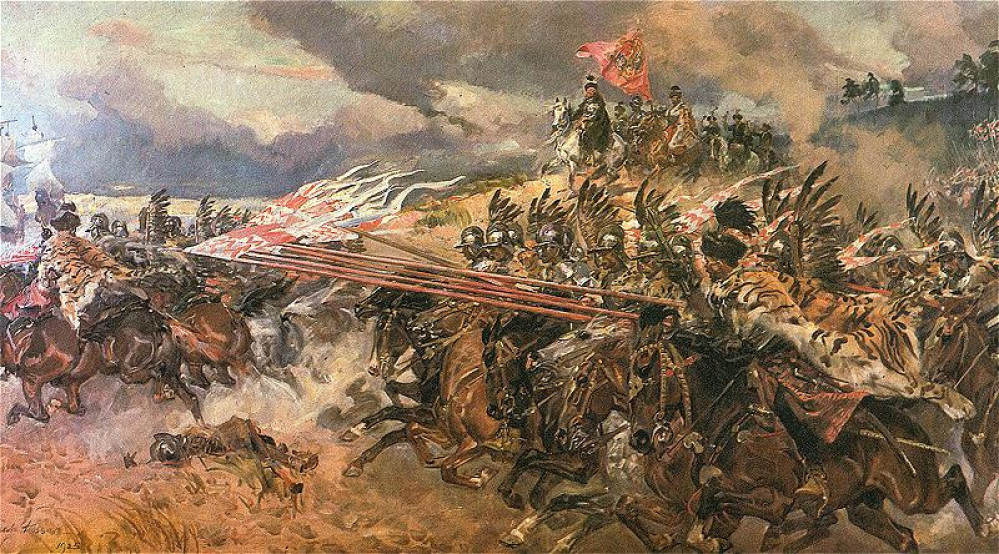
Husaria - Building a Polish army for the 1620s
If Swedes And Pigs Could Fly
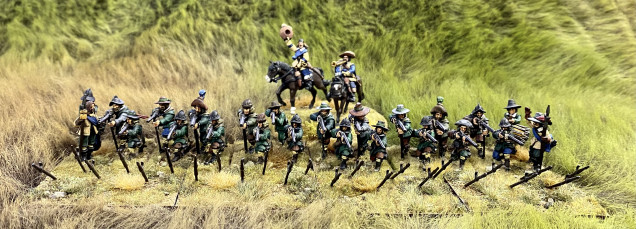 28mm Swedish musketeers protected by Swinefeathers from Warlord. Figures from Warlord, Foundry, Perry & TAG.
28mm Swedish musketeers protected by Swinefeathers from Warlord. Figures from Warlord, Foundry, Perry & TAG.“By the one end it is made fast in the ground in such a manner that the other may lay out so it may meet the breast of a horse where by a body of musketeers is defended as with a palisade against the rude charge of a squadron of horse…” from James Turner’s 1683 book ‘Pallas Armata, Military Essayes of the Ancient Grecian, Roman and Modern Art of War’.
Background
Swinefeathers, or Swedish Feathers, were portable stakes used by shot armed foot in the 17th century to create temporary defences against mounted troops. The idea of missile armed foot troops using some form of defences against charging cavalry was not a new idea in the 17th century. I’m sure that many of you will immediately think of Henry V’s army at Agincourt with the English and Welsh bowmen using stakes to help defend themselves against the French mounted knights.
By the 17th century musket armed infantry were of course still vulnerable to enemy cavalry. Although their pike armed colleagues where intended to be one form of defence against cavalry, the idea of these pre-prepared stakes was re-introduced during Prince Maurice’s military reforms at the turn of the 16th and17th century. Each stake was made of a stout, thick pole, between 4 and 6 feet long, with a metal point at one end to aid planting it in to the ground, and a metal spear-point at the other with which to fend off the enemy. It may have got the name ‘Swinefeather’ because of it’s similarity to a boar-spear; a very stout spear used in the hunting of wild boar.
The Swedes, who were fighting the fearsome cavalry of the Polish-Lithuanian Commonwealth in the early 1600s, needed ways to defend their musketeers. They appear to have been early adopters of Swinefeathers, and Gustav Adolf ordered enough Swinefeathers to equip 8 regiments of infantry in the early 1620s. It was probably because of this adoption that Swinefeathers also became know as ‘Swedish Feathers’.
Technical Details
Although Swedish/Swine Feathers are mentioned in a number of military treaties of the time we know frustrating little about the details of their construction and use. From the descriptions of them in the treatises, and from some tantalising 1/6 scale contemporary models that have survived, we have some idea of how they may have looked. One interesting feature is the possibility that in some form the stakes incorportated a feature that allowed them to be used in the dual role as either a musket rest, or as a stake. While this makes sense in reducing the number of things a musketeer was expected to carry, it does rather limit functionality as while placed in the ground as a stake, it couldn’t be used as a rest to allow the musketeer to continue firing, and vice versa.
Use In Action
There use in actual engagements is quite difficult to come across. Charles Singleton has written a very interesting piece (https://www.academia.edu/22167284/Of_Swedish_Feathers) that describes their use in the British Civil Wars. The Kadrinazi blog, by Michal Paradwoski, also has some excellent references for the use of Swinefeathers (https://kadrinazi.blogspot.com/2010/06/swinia-kon-i-kozio.html )
[NOTE – The Kadrinazi blog is in Polish. I have to use the Translate function in the Chrome browser to read this, but it is worth it!].
It was following reading about their use at the battle of Mewe / Gniew in 1626 between The Swedes and Poles that I started to think about how I might represent them on the miniature battlefield. In this battle Gustav Adolf needed to operate his musketeers without their protective pikemen because of difficult ground. To provide the musketeers with some defence, it appears that this was an occasion when the Swedes issued their musketeers with Swinefeathers. Although there are no details of their use or impact in the battle, it is interesting to note (from the Kadrinazi blog) that an Engineer in the Polish army, Wendelin Schildknecht, who served in this war against the Swedes writes about the use of Swinefeathers. He comments on the effectiveness of the Swinefeathers against the Polish cavalry and goes on to say that he was surprised the Swinefeathers were only used for a couple of years by the Swedes. He’s not sure why their use stopped, other than perhaps the inconvenience of expecting the musketeers to carry the extra encumbrance.
Modelling Feathers
I suppose the easiest solution would have been to grab some wooden cocktail sticks and to have used these to represent Swedish Feathers. However, I remembered that Warlord Games have some rather lovely looking Swedish Feathers available in their 28mm Pike & Shotte range ( https://store.warlordgames.com/products/swine-feather-musket-rests?variant=31468976078928). These look to be based on the 1/6 scale surviving models, and include the ‘musket rest’ feature. Even though I’m not convinced that they were used in a dual role, these white metal models were too nice not to use! An order to Warlord HQ was swiftly followed by the delivery of a good supply of Swedish Feathers.
To make a hole on the base for a Swinefeather I used a pin vice with a 0.5mm drill bit. The stakes need to be at an angle, but I found it impossible to drill at an angle in to the MDF, and so I started a perpendicular hole first, and then drilled at an angle once the hole was started. Each small hole in the MDF base was then enlarged slightly with a round needle file, and each feather was glued in place with super glue and spray activator.
I primed the based Swinefeathers with Halfords rattle-can Camouflage Dark Brown (I don’t often use spray, but it was a nice day outside and I thought any risk to the simple stakes was minimal). This gave a nice prime and dark base coat. I paint the pikes for my Swedish army black, based on the protective paint that is believed to have been used on them (see Lion from the North, Volume 1 by Michael Fredholm Von Essen). It would seem logical for the Feathers to be treated in the same way, but I was worried that they might not show up very well on the table if their were black or dark grey. I therefore opted for a reddy-brown colour for the wood, and dark-metal for the metal parts.
Once my regular basing was added I then had sets of Swinfeathers to deploy with my Swedish units of shot. In the next post I will look at their use under the Pike & Shotte rules, and also how I decided to try and ‘jazz up’ some bases.










































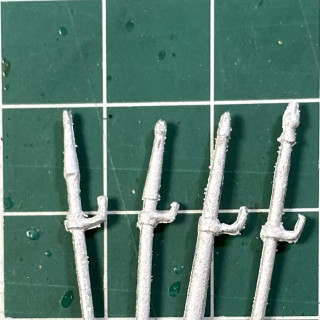
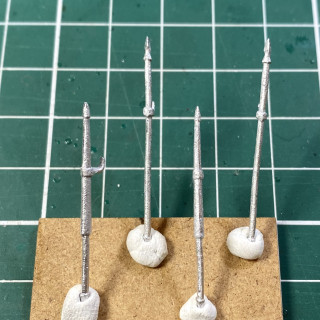
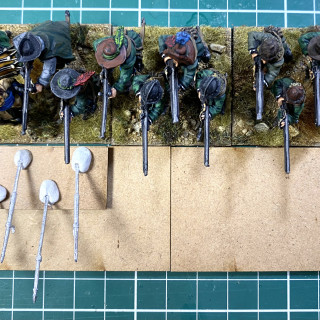
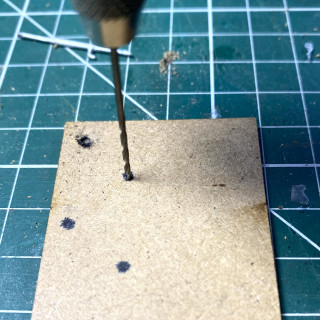
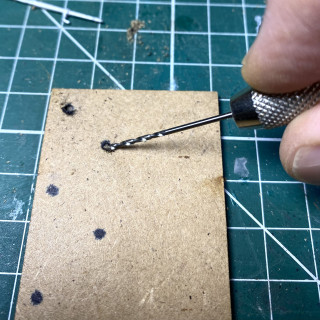
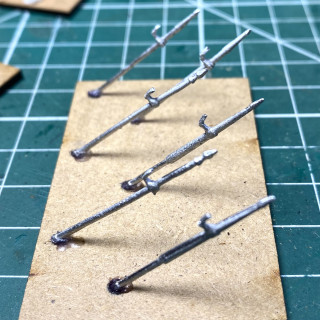
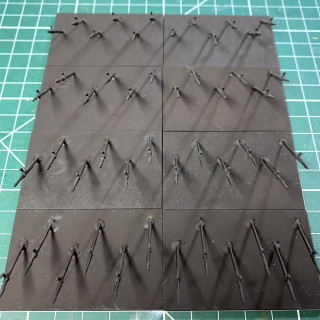
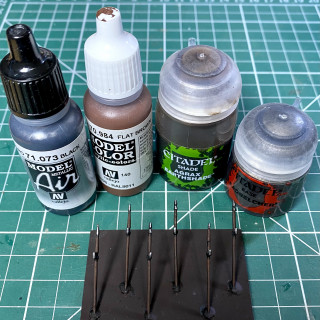
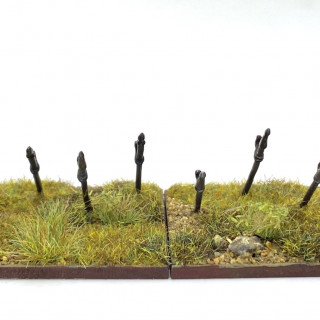
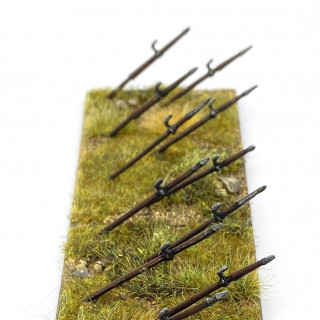
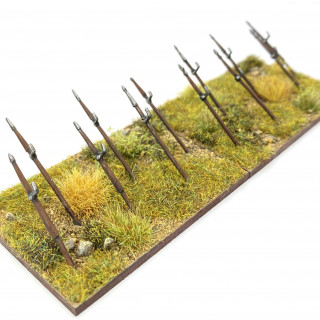

































Leave a Reply